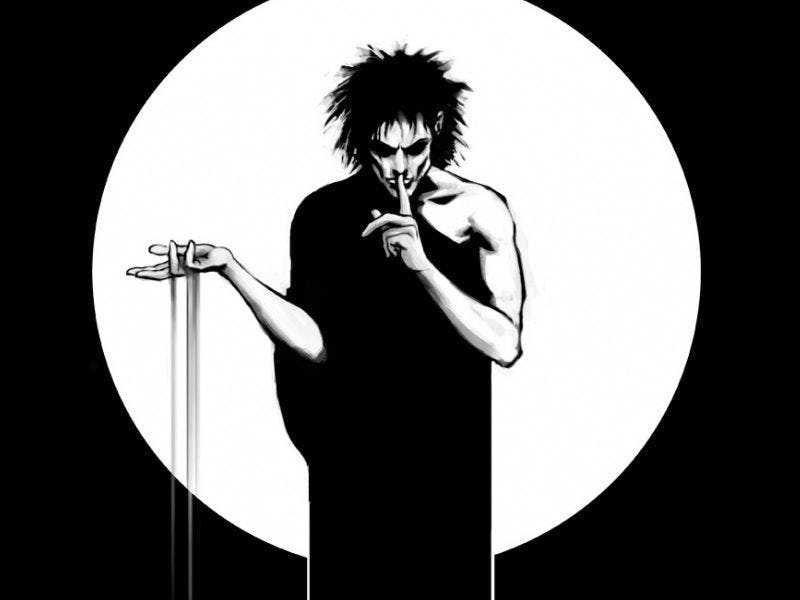Sandman, Lucifer, And the Ongoing Quest to Adapt Neil Gaiman for the Big Screen
Studios have attempted to adapt 'Sandman' for nearly 20 years -- why isn't it working?

Sandman, the award-winning comic book series by Neil Gaiman, author of American Gods and Stardust, has been the focus of several film projects since the 1990s. The closest the comic ever got to a live-action adaptation was actually this year, when Joseph Gordon-Levitt signed on to direct and possibly star in a Sandman film, but creative differences in March prompted his resignation.
So why has the series had so many issues transitioning between projects? Outside of the corporate hubbub of Hollywood, there are a few factors in the source material which may contribute to its bumpy road to a film adaptation.
Breadth of content
With an expansive series like Sandman, it’s difficult to condense the comics into a single, streamlined narrative that feels both concise and concrete. The same difficulty, of course, accompanies the adaptation of DC and Marvel comics as well. Like the superhero comics we’re all familiar with, Sandman hosts crossovers and appearances by other DC characters like Loki, Martian Manhunter, and John Constantine. In order to fully realize Sandman’s world, a film franchise would benefit from cooperation with DC and Warner Bros.
The downside here, in comparison to comics like Spider-Man and Superman, is that most people are not already familiar with Dream, the protagonist of Sandman, and his ethereal world. While most are familiar with the sandman story — that guy who puts people to sleep? — Gaiman’s rendition of that fabled character is just a small fraction of what lives in the universe of The Dreaming, where a large portion of the series takes place. And building a film around this version of the sandman, alternating between Dream or Morpheus, still means his background and mythology aren’t common knowledge, unlike, say, Batman. Batman v Superman took flak for, among other things, re-introducing Bruce Wayne’s backstory to audiences who’ve already seen it by now. Well-known heroes like Batman have appeared on screens and in comic books for 40- to 50- plus years, so those comic book adaptations can bank on familiarity before making an immersive dive into their stories’ lore.
Lucifer, a character from the Sandman series currently enjoying his own spin-off series of comics, is (and you can probably guess from his name) the devil, so whether you practice his religion or not, most everyone is, at least, familiar with the concept of evil personified.
This is the primary reason for Gaiman’s Lucifer landing a TV series on FOX this year. While parts of his personality and background have been tweaked from the original fallen angel, there’s a basis of implied knowledge. It also helps that the series is a crime drama, and everybody just soaks those up.
Controversy
Already with the release of Lucifer, the content has been the object of controversy. If Sandman, which also garnered concerns after its original publication, were to become a major film franchise, it would likely be a venture commented on by, say, Fox News anchors.
Originally, in the ‘90s, when the comics were released, a number of people boycotted the series because of the gay, bi, lesbian, and trans characters who appeared in the series. More recently, The American Family Association’s One Million Moms put together a widespread petition to ban Gaiman’s books. They believed Lucifer mocked the bible in his characterization. In response, Gaiman essentially rolled his eyes with a post on his Tumblr. For some studios, though, these reactions to the written work of Sandman could put a damper on potential future adaptations.
While the wholesome, heterosexual Avengers films appeal to middle Americans alike, a Sandman film franchise would likely alienate the Christian conservative families who hold incredible sway in demographics.
Unique visual rhetoric
As with most comics, Sandman’s story relies heavily upon its visuals. Its world hosts many fantastical characters, humanoid and otherwise. There are fairies, animals, and high fantasy-style giants. Of course, CGI-heavy worlds with aliens and creatures appeared on the big screen before, successfully, but a Sandman film would demand practical monster effects, complex concept art and a whirling, unique universe of vastly different environments. That kind of film takes money, and a complex and drawn out pre-production effort.
A collection of the eclectic characters with The Dreaming
If anything, Sandman would be ideal as an animated feature. This would solve the problem of figuring out how to create an entirely CGI-made environment, without making it completely obvious that it’s a computer generated world. Morpheus also changes appearances often, when moving from different countries and cities, and animation would make that gimmick a little easier to swallow. We wouldn’t want Sandman to look like The Imaginarium of Doctor Parnassus.
For now, Sandman exists in artistic purgatory for those looking to adapt popular comic book franchises to the screen. No one has figured out a way to make the venture profitable enough to merit an expensive production and niche fanbase, both factors studios aren’t crazy about.